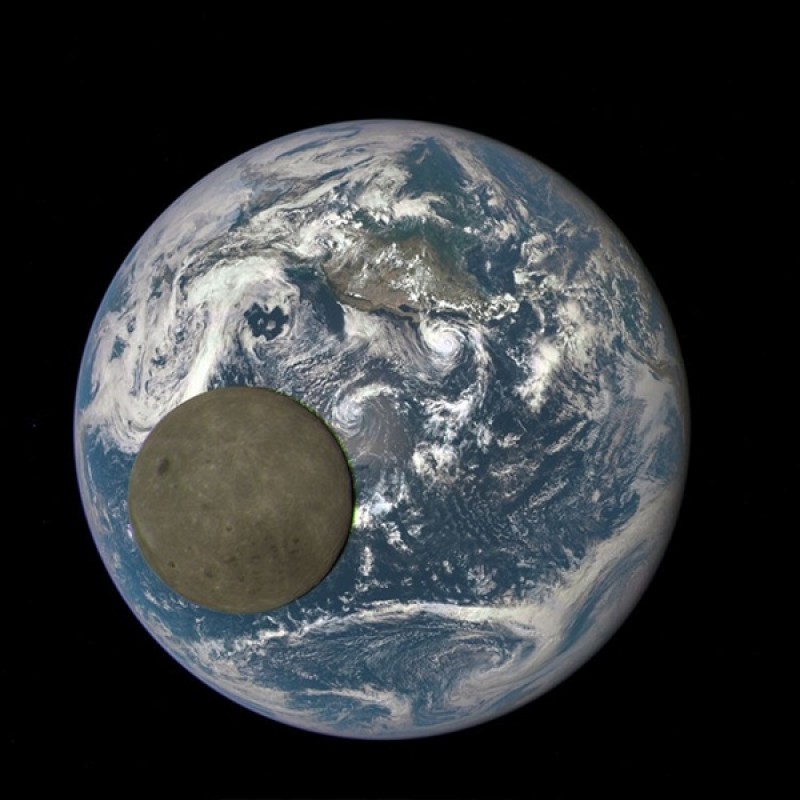 |
| An image EPIC took of the transit of the Moon in front of the Earth. NASA photo. |
The camera aboard NASA and NOAA's Deep Space Climate Observatory (DSCOVR) satellite captured images of the moon as it passed in front of the sunlit side of the Earth for the second time.
"For the second time in the life of DSCOVR, the moon moved between the spacecraft and Earth,” said Adam Szabo, a DSCOVR project scientist at NASA’s Goddard Space Flight Center in a press release. "The project recorded this event on July 5 with the same cadence and spatial resolution as the first ‘lunar photobomb’ of last year."
The Earth Polychromatic Imaging Camera (EPIC) onboard DSCOVR is a four-megapixel charge coupled device (CCD) camera and telescope that is orbiting at one million miles (1,609,344 kilometers) from Earth at L1 orbit. The mission of DSCOVR is to study the real-time solar wind for the National Oceanic and Atmospheric Administration (NOAA) as the satellite is strategically placed between the Earth and Sun. Meanwhile, EPIC is in constant view of the Earth by monitoring the ozone, cloud height, aerosols, and vegetation in the atmosphere.
Read more: astronomy.com